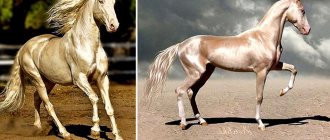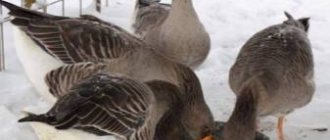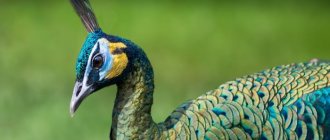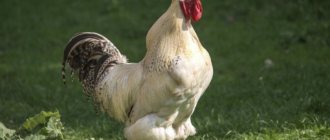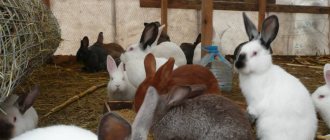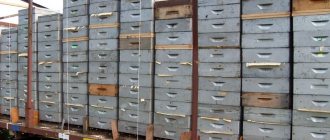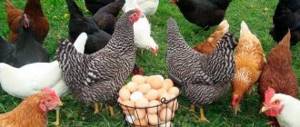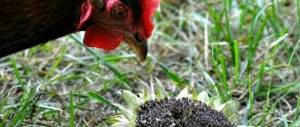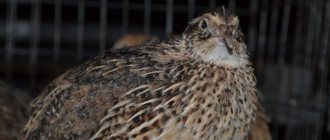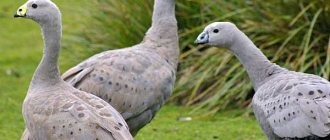How and where to buy a horse?
The cost of a horse may vary. It all depends on what purpose you need it for. For 30-60 thousand you can buy a mongrel, sick or old horse. Also, horse breeders often buy a horse from a breeding facility. Despite the fact that, for example, a horse’s illness may not affect its racing performance in any way. But if you are new to this business, then it is better to take a professional with you to purchase, he will be able to immediately tell whether the horse is worth the money or not. And it can even help you make a very profitable purchase, since good horses are often given away for next to nothing.
Foals also cost from 30 thousand rubles. But we must remember that the foal is not trained and trained. Therefore, you need to hire a good teacher for your young horse and be patient.
If the horse is needed for sport, then, accordingly, it will be more expensive. A good thoroughbred horse will cost from 60 to 500 thousand rubles (breeds such as Hanoverian, Trakehner, Oldenburg, Holstein and others).
From 500 thousand rubles you can buy thoroughbred horses: Arabians, Akhal-Teke horses, Berbers, thoroughbred horses for racing and sports.
How much does a horse cost? And who is better to buy?
These questions are also relevant for those who are thinking about buying their own horse. Basically, it all depends on your goals. Some people want a great performance horse that they can ride actively. For some, it’s a hobby (the so-called horses that are purchased for pleasure) so that they can occasionally ride into fields and forests, participate in amateur competitions, or practice some tricks. Someone takes in an old or sick horse. There are also those who are given horses - such gifts are very common among some wealthy people. Of course, these options do not exhaust the purposes of buying horses.
When a person consciously goes to buy a horse, he is interested in the horse’s age, its skills, breed, build, gender, etc. Someone prefers to buy a foal and raise it for themselves (this path is for experienced ones; a novice horseman may face a number of difficulties, which can lead to dire consequences). Others buy an already trained horse 3-5 years old or older.
When buying a stallion, it is worth keeping in mind that they are usually more complex in behavior, and in many stables they are very reluctant to board stallions or not at all. On the other hand, many athletes prefer to work only with stallions.
The breed also plays an important role, since the temperament of the horses largely depends on it. Purebred (hot-blooded) breeds are distinguished by their ardent temperament, agility, dry constitution, and exquisite beauty. This includes the most ancient breeds - Arabian, purebred horse, Akhal-Teke, Barbary. On their basis, the so-called half-bred horses obtained by mixing with local breeds. These horses are the most demanding of the rider.
Warm-blooded horses are characterized by a calm, balanced character, sufficient agility and courage. They were originally bred for military purposes. These include Hanoverian, Trakehner, Oldenburg, Holstein, Friesian and other breeds. These horses are considered the most versatile.
Cold-blooded horses include horses of heavy draft breeds, which are distinguished by their phlegmatic character, powerful, often loose physique and enormous strength. Of the domestic breeds, these are the Russian heavy draft, Vladimir heavy draft and Soviet heavy draft breeds.
Of course, this scheme does not limit the whole variety of breeds (there are more than 250 of them) and temperaments. And, of course, there are exceptions everywhere. However, a novice, inexperienced horse owner should not buy a horse that is too temperamental - he may not be able to cope with it, even if an experienced handler works with the horse. And subsequently you will have to sell your pet.
In general, you need to keep in mind that there are no absolutely universal horses. Some “specialize” in dressage, some in show jumping, some in field riding. Although it is quite possible to find a horse that, at an amateur level, will run, jump, and give your children rides.
Another thing to keep in mind when purchasing is that over time you may outgrow your horse. You will want more than your horse can give you. It also happens the other way around - a person acquires a horse that is too complex and demanding and cannot cope with it, despite the efforts of the trainer. What to do in this case? You decide. Someone gets or rents another horse, someone sells one horse and buys another.
The price of horses varies. It is determined by breed, pedigree, age, skills, etc. If you wish, you can find a horse for the price of meat - about 30 thousand rubles. When stud farms are disbanded (and this now happens, alas, quite often), a horse of good blood can be bought for a very modest amount, or even for free. On average, the price of a good hobby varies in the range of 70-200 thousand rubles. There are expensive and very expensive horses that cost hundreds of thousands, or even millions of dollars. So “half a kingdom for a horse” is not a metaphor.
But whatever your motivation, think carefully before buying a horse. For it is easier to buy a horse than to sell it. Weigh your strengths and financial capabilities. If you are not confident in your abilities, limit yourself to riding or renting a horse. I repeat again: a horse is not a hamster!!!
♦ On the topic: How much does it cost to keep a horse?
Sheet and Cube
Choosing a horse
Photo: Anastasia Mezhnyakova
To choose a good horse, you need to look not only at the teeth. When purchasing, you need to pay attention to several criteria.
- Adequacy . It is important that the horse is friendly, makes contact, and takes treats. If a horse shows signs of aggression, hides in a corner, knocks its hooves, bites, then this is a reason to seriously think about it. You can expect anything from such a horse. Good horse breeders can retrain a horse and restore its calmness and trust, but this takes time and extra money. If you are an amateur - a beginner, then it is better to take a mare. The stallion is more difficult to control, less flexible and needs a firmer hand.
- Legs. Only a doctor can determine the health of a horse, including the health of its legs. But if you see growths, swelling and swelling, then this is also a reason to think about it.
- Hooves. It’s bad when the hooves have cracks, suppuration, and the hoof is skewed. It is ideal to x-ray the horse.
- Movement. Ride a horse. Change to a trot or canter. Notice if the horse is lame. A doctor or an experienced trainer can help you here too.
- Breath. After a gallop, the horse should catch its breath in 2-3 deep breaths. If a horse cannot catch its breath for a long time, something is wrong.
- Passport. The passport is issued by the Institute of Horse Breeding. It should indicate: the horse’s year of birth, breed, horse’s parents and ownership history. You should be recorded as the new owner. If your horse's passport is lost, you can get a new one at the Horse Breeding Institute. For a thoroughbred horse – 3 thousand rubles. For a mongrel – 1 thousand rubles. Register a new owner – 300 rubles.
To deliver the horse to its new location, you need to hire a horse trailer. Cost – 20 rubles per 1 kilometer (may vary in regions).
Wait for the horse
- The easiest and cheapest way to keep a horse is in your own yard. The stable should be heated, clean and spacious enough. The stable must be cleaned twice a day. Water and feed the horse, and be sure to walk the horse every day. If a horse is not ridden and left in a stall, it can become aggressive, unpredictable and unruly. Often a groom is hired to look after the stable and walk the horse.
- A stall at a stud farm. This is a fenced room for one horse. The price includes the services of a groom (walking, feeding, cleaning of the stable and horse). Cost from 10 thousand rubles per month.
- Private stay. This is a place in a horse club or horse owner. Cost - from 11-15 thousand rubles in different cities. It also includes the services of a groom.
When choosing a horse stall, you should pay attention to some criteria:
- Spaciousness (stall size 3X3 meters, high ceilings 2.5-3 meters),
- Mats and wooden floors (it’s cold for horses to sleep on stone or concrete),
- Good ventilation (the stable should not be stuffy or dusty),
- Without drafts (from drafts the horse will constantly get sick),
- Quality of feed (hay without dust, washed oats),
- Attitude of the grooms (ask the daily routine),
- Litter. Sawdust, straw, hay, rice or seed husks. It is important to have plenty of bedding.
Cost of horses in our country
How much a horse costs depends on many factors, the main ones include:
- breed affiliation;
- age of the animal;
- characteristics of its exterior;
- suit;
- gender;
- pedigree;
- qualitative characteristics affecting the offspring.
The Russian “horse” market is divided into five sectors:
- the cheapest horses, which cost from 20 to 40 thousand rubles. This group usually includes old, sick and injured individuals. Breeds usually don’t play a special role here. These are ordinary workhorses. Also for this price you can buy an unbroken horse or a horse that was specially raised for meat;
- horses for lovers. Depending on the region, animals in this group can cost from 40 to 150 thousand. If you buy a horse, as they say, for the soul, then the costs of all kinds of certificates and permits are significantly reduced. The main criteria when choosing are the health of the animal, its age, character and, most importantly, whether you personally like it or not;
- amateur horse with initial sporting abilities. Here prices already vary from 150 to three hundred thousand rubles. Additional expenses will also be required for various veterinary examinations;
- horses of famous and popular breed groups. This is already the so-called “representative” class. The main goal when buying a thoroughbred horse, as a rule, is to emphasize the high status of its owner. Typically, such animals do not participate in sports competitions. The range of prices for “representative” horses is from three hundred thousand to half a million;
- elite young animals to participate in prestigious competitions. Here the cost starts from half a million rubles and has practically no upper limit. The cost of such horses is influenced by the breed, the quality of the pedigree, the level of preparedness for competitions, exterior and age. In addition, substantial investments will be required for the maintenance and feeding of the animal, its training, the salary of a qualified trainer and jockey, as well as for veterinary certificates and support.
More on the topic: Features of the color of a bay horse
Horse feed
The minimum cost of a month's supply of feed is 10 thousand rubles.
- Hay: a horse weighing 500 kg needs 10-15 kg of hay per day, 300-450 kg per month. Hay now costs 2-5 rubles per kilogram, a month will cost 600-2250 rubles.
- Porridge. Once a day, bran is added to steamed oats. Mix everything before feeding. The proportions are 1.5-2 kg of oats and 500 grams of bran. A 25 kg bag of bran costs 200 rubles, a 30 kg bag of oats costs 300-400 rubles. It would be good to add crushed corn to the young animals.
- Pure oats - 5 kg per day. You need 150 kg per month - about 1,500 rubles.
- Vegetables - carrots (unlimited), beets (a little). Usually they give 5 kg per day. You need 150 kg per month - about 2200 rubles.
Ammunition
The cost of all ammunition is approximately 55-60 thousand rubles. It is purchased once for a fairly long period of time, so if its cost is divided by its service life, it is not so expensive. So, for a horse you need to purchase:
- Saddle – 20 thousand rubles.
- Stirrups – 1 – 10 thousand rubles
- Putlishcha – 1 thousand rubles
- Cinch – 2 thousand rubles
- Saddle pad – 2 thousand rubles (4-5 pieces needed)
- Fur jacket – 2 thousand rubles
- Bridle 2-6 thousand rubles
- Halter – 1 thousand rubles
- Chembur – 500 rubles
- Hackamore – 2-10 thousand rubles (optional)
- Corda – 1 thousand rubles
- Bandages – 1 thousand rubles
- Boots or bells – 1 thousand rubles
- Blanket for the winter – 5 thousand rubles
- Whip – 600 rubles
- Chamberier – 1 thousand rubles
Horse care
The horse needs to be brushed every day. Before riding, it is better for the owner to do this, this way a connection with the horse is established.
A starter set of various brushes costs from 2 to 7 thousand rubles.
You should also definitely pay attention to hoof trimming. A farrier should be called every 3-6 weeks. The cost is approximately 1-1.5 thousand for 4 hooves. The additional cost of horseshoes and nails is approximately 1.5 thousand rubles. Hooves are the second heart of a horse, you should not neglect them.
How much can you buy a pony for?
Children are usually taught to ride these small horses. They are very flexible and balanced, and children really like them.
Such a foal costs from forty to eighty thousand rubles.
In addition, ponies live longer than their full-size counterparts, and such a pet will delight you and your family for a long time.
More on the topic: Can horses swim?
